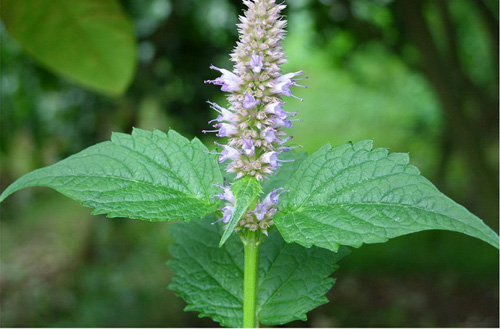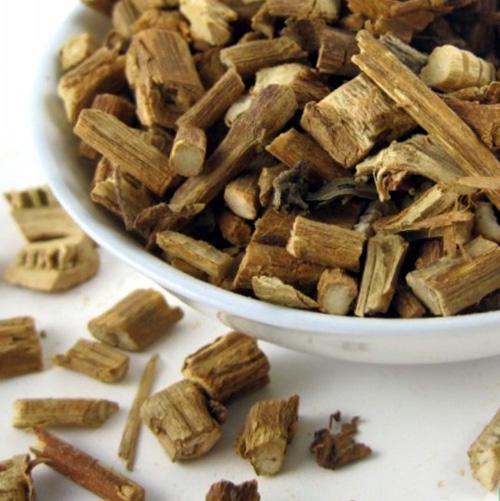The source is from the aerial parts of a perennial herb, Pogostemon cabin (Blanco) Benth., family Labiatae. The medicinal material is mainly produced in Guangdong Province, cut and collected in summer and autumn. The fresh is cut into segments, or dried in shade for being used.
Medicinal Properties:
Pungent in flavor, slightly warm in nature and attributive to the spleen and stomach meridians.
Actions:
Eliminate dampness, clear away summer- heat and stop vomiting.

Application
For the obstruction of dampness and stagnation of qi in the middle energizer manifested as fullness in the chest and epigastrium, loss of appetite and nausea, fatigue of the body and spirits, it is usually combined with Cangzhu (Rhizoma Atractylodis), Houpo (Cortex Magnoliae Officinalis), etc..
It is indicated for the early stage of summer-heat-dampness and dampness-warm syndromes of seasonal febrile disease. For affection of exogenous wind-cold in summer and retention of dampness and cold in the interior manifested as aversion to cold, fever, headache, fullness and pain in the chest and epigastrium, vomiting and diarrhea, it is usually combined with Zisuye (Fotium Perillae ) , and Houpo ( Cortex Magnoliae Officinalis ) , etc., such as Houxiang Zhengqi San (Powder). For the early stage of damp-febrile disease, used together with Huangqin (Radix ScuteUariae), Huashi (Talcum), and Yinchen (Herba Artemisiae Scopariae ), etc., such as Ganlu Xiaodu Dan (Pill).

It is used for vomiting, and is an essential medicine for the treatment of dampness-retention syndrome with vomiting. It is usually combined with Banxia (Rhizoma Pinelliae), to which Huanglian (Rhizoma Coptidis), Zhuru (Caulis Bambusae in Taeniam ) , etc. are added again for vomiting being a bit on the heat side; for that due to pregnancy, it is combined with Sharen (Fructus Amomi) and Zisugeng (Caulis Periltae).
Usage and Dosage:
3 - 10 g is used in decoction for oral use. The amount of the fresh is doubled.







